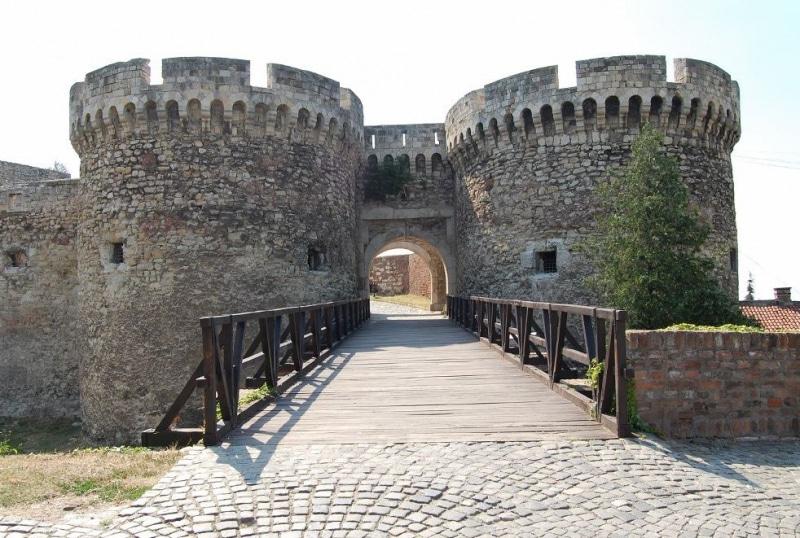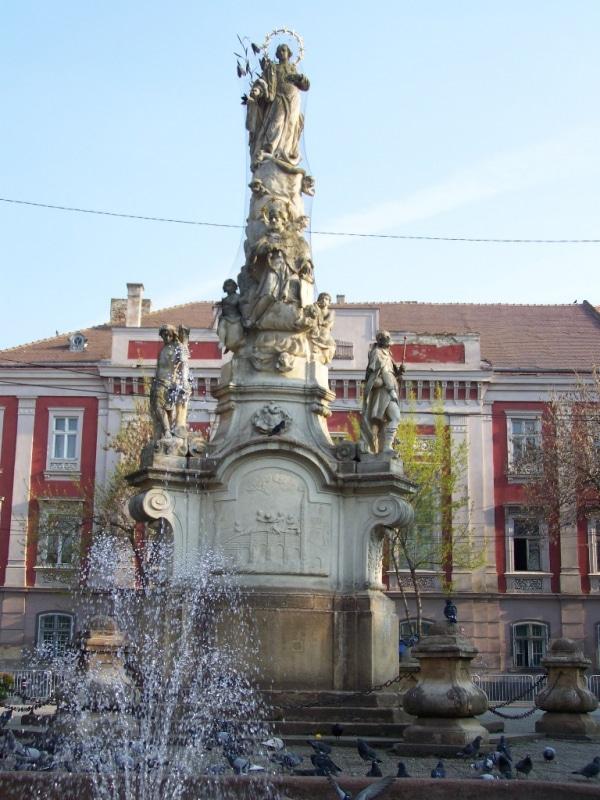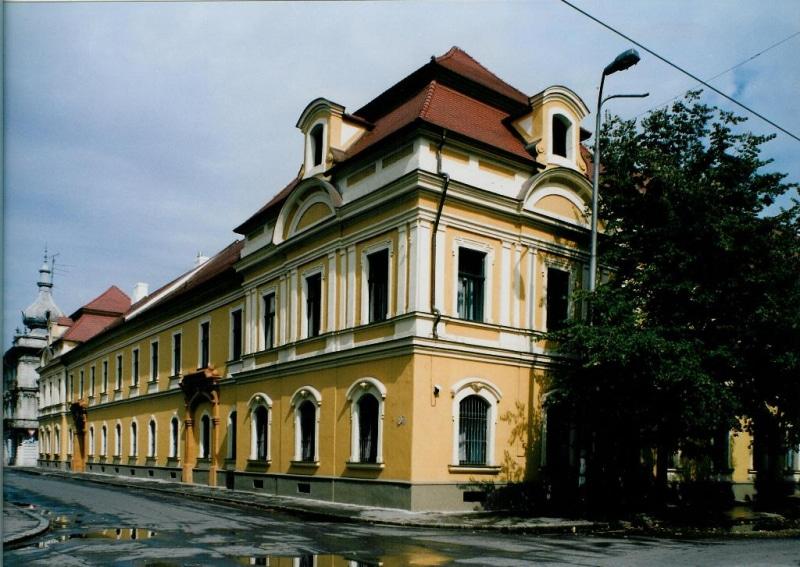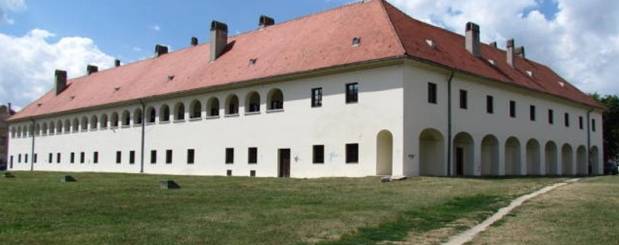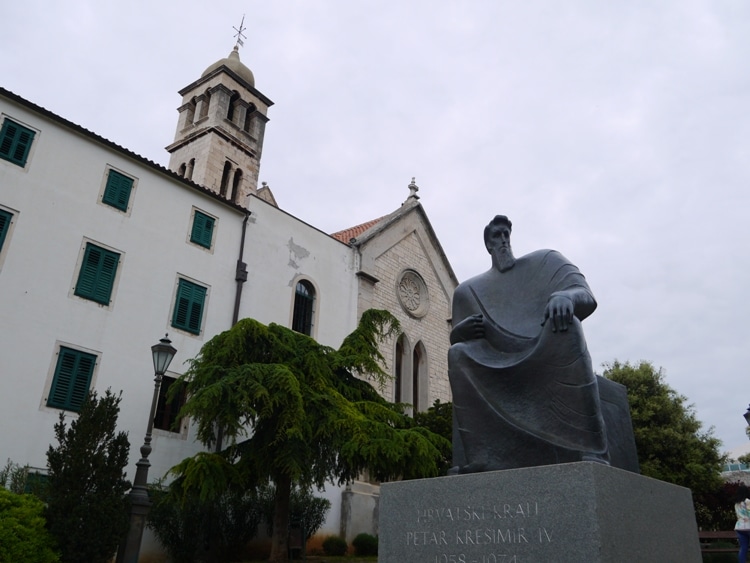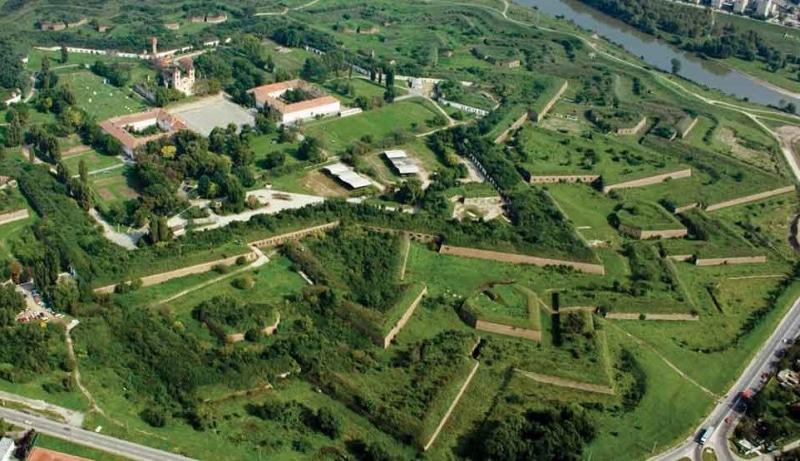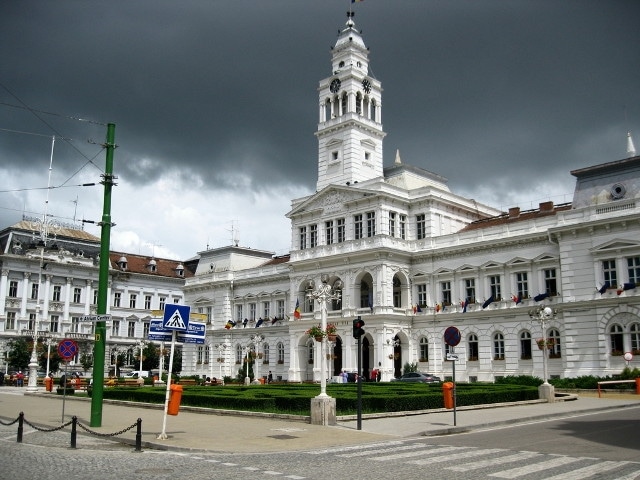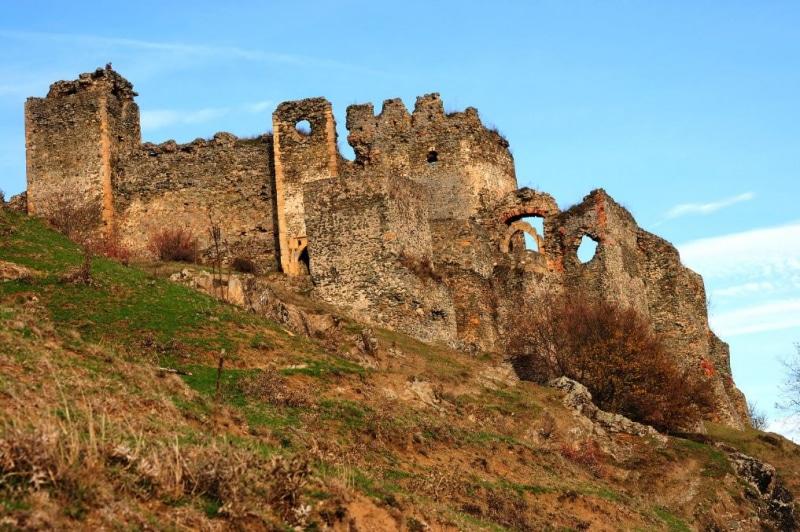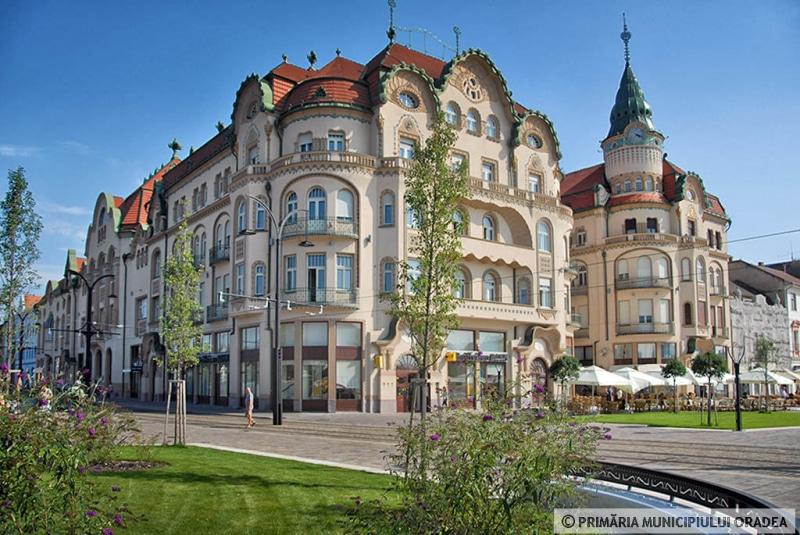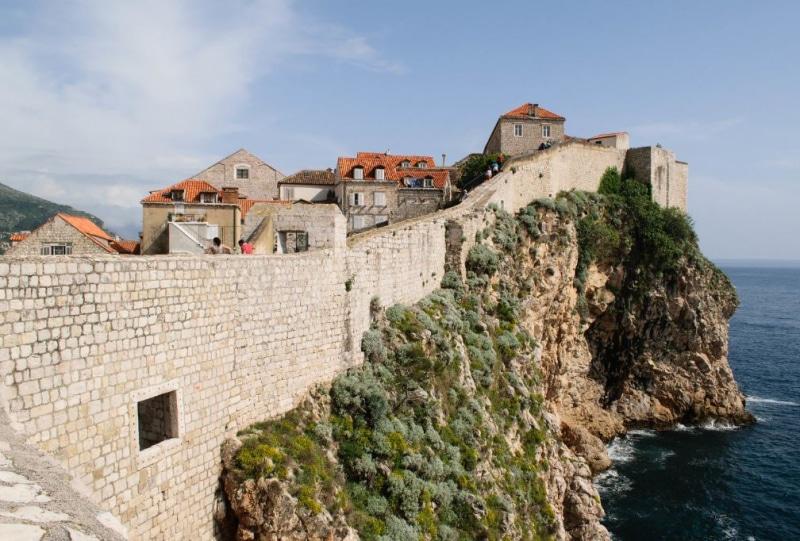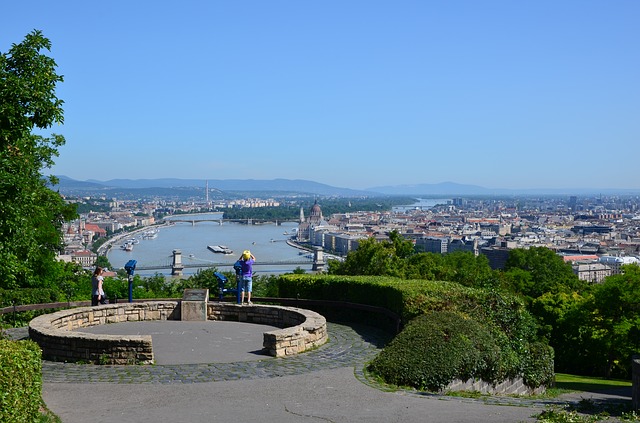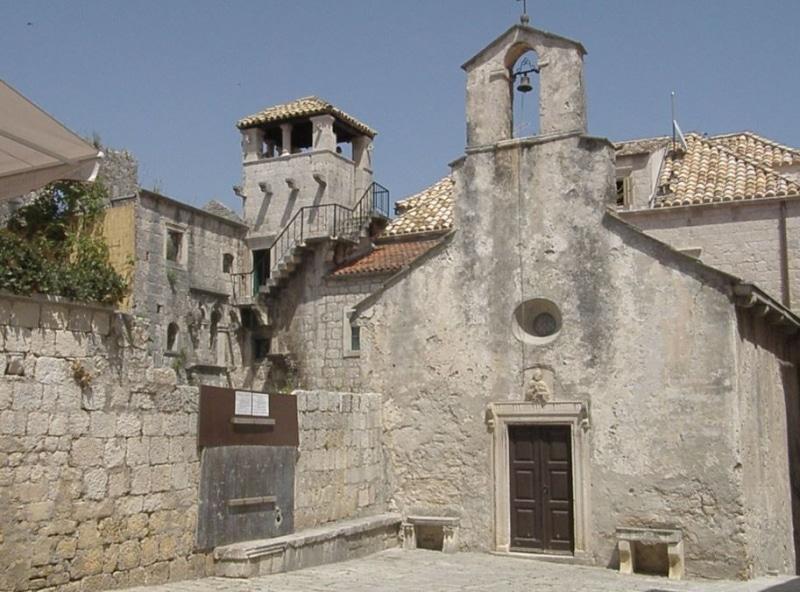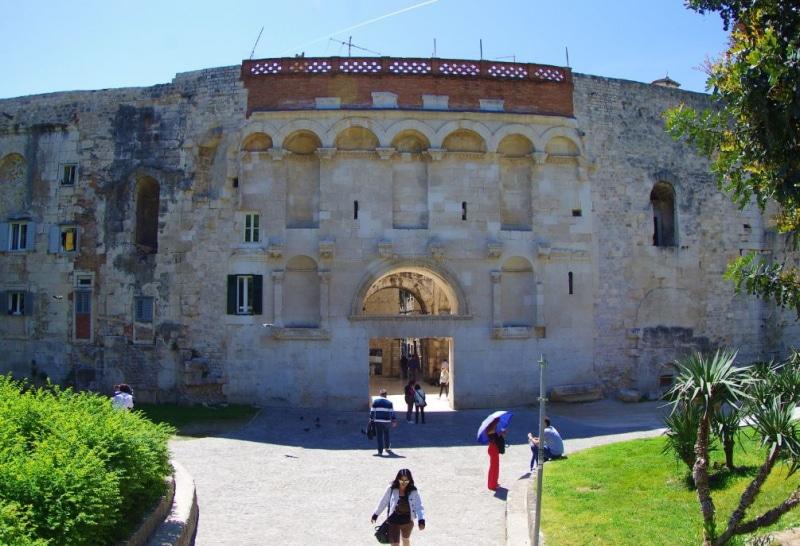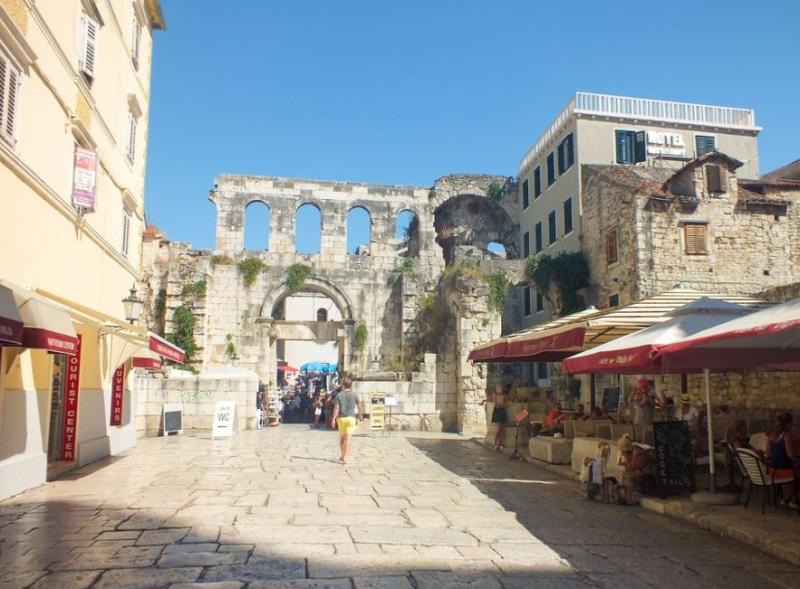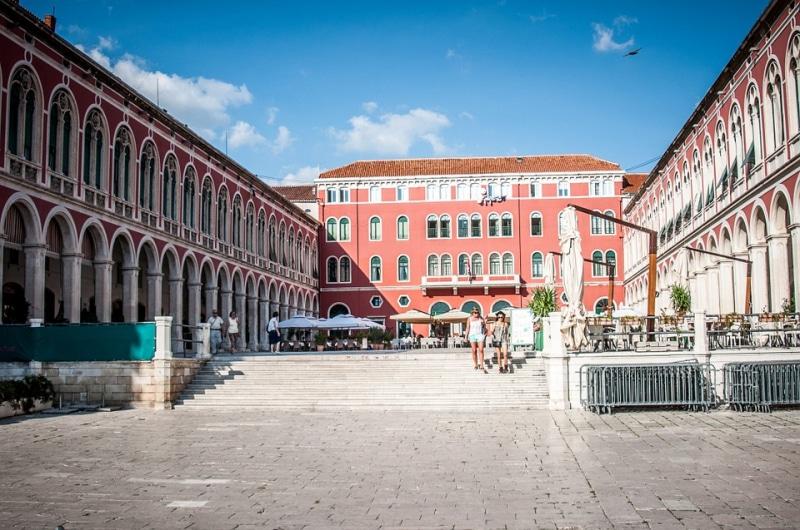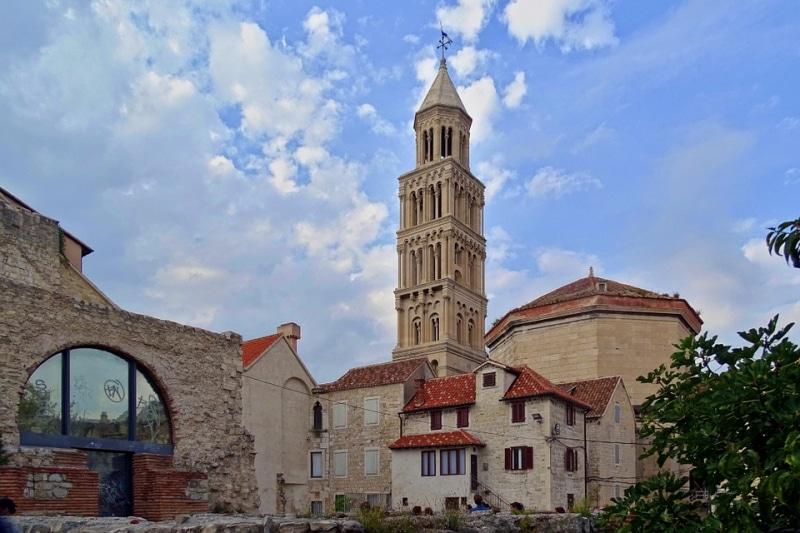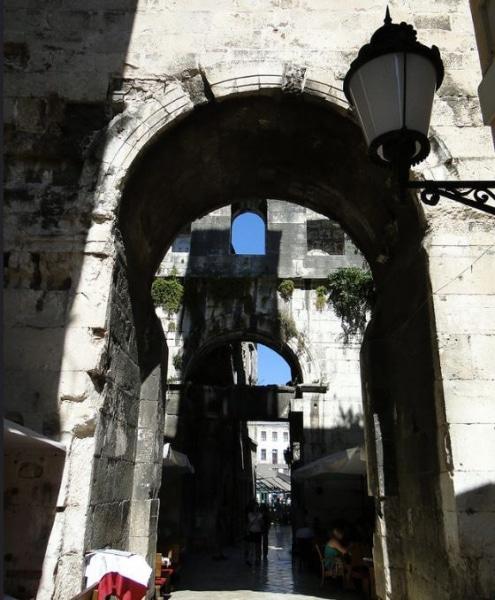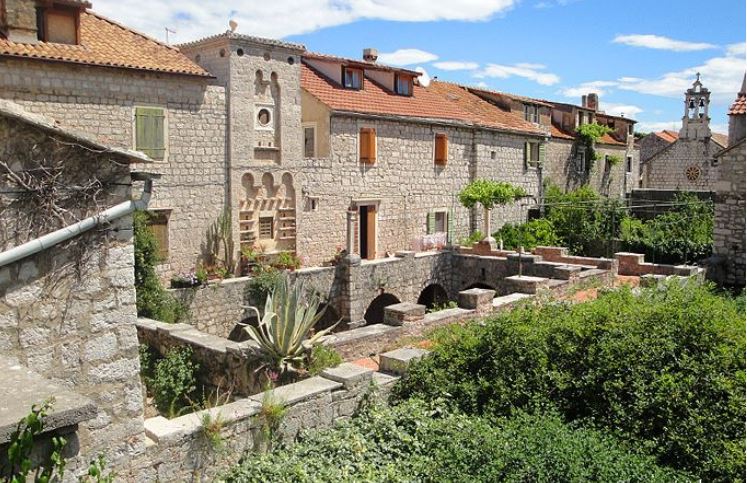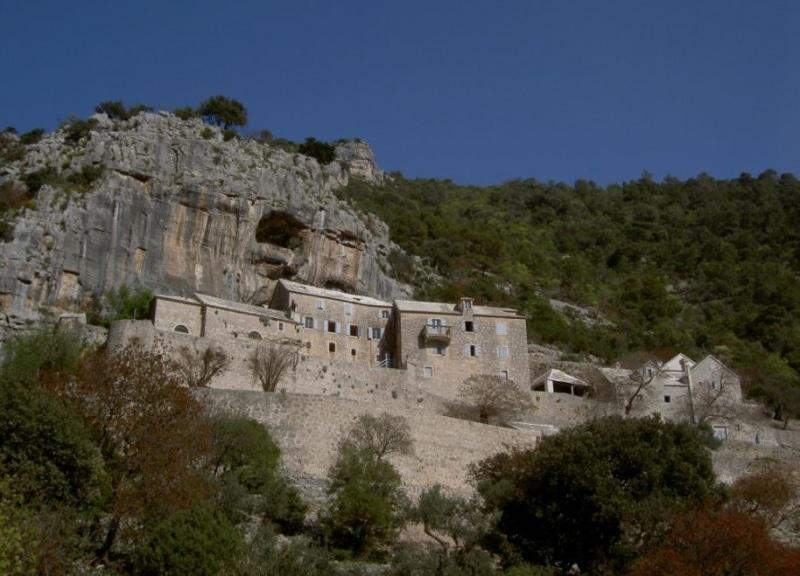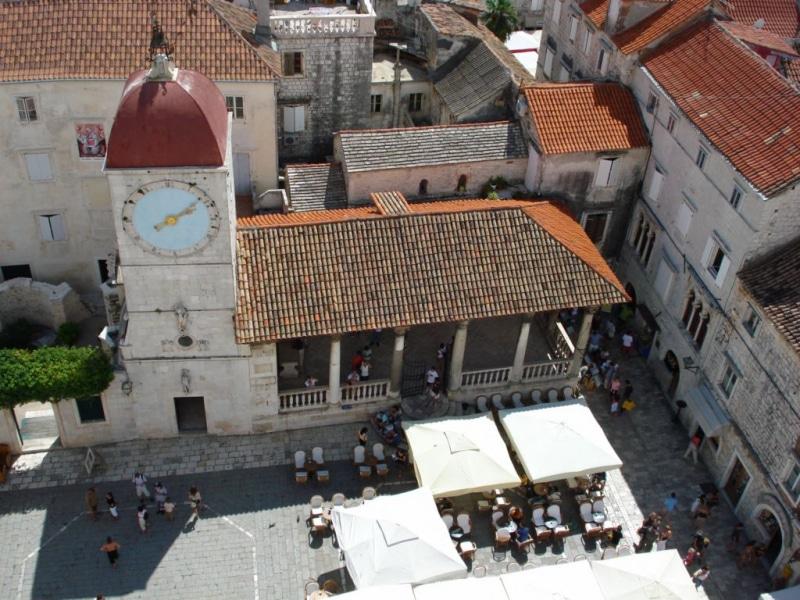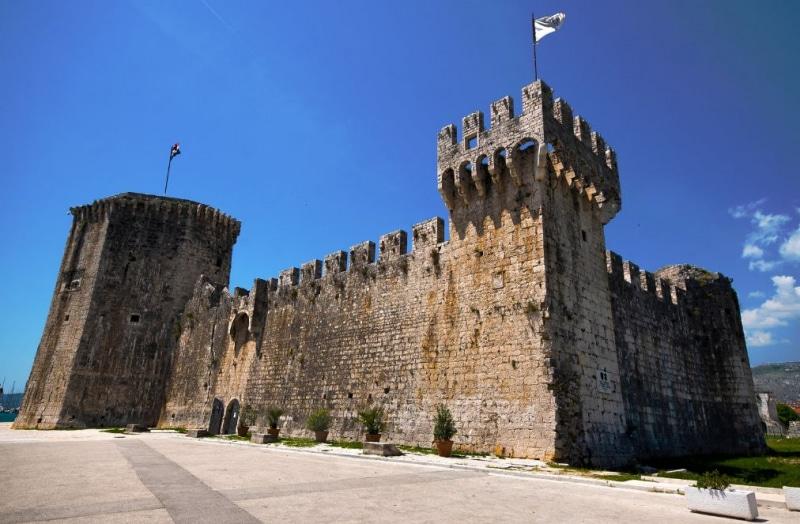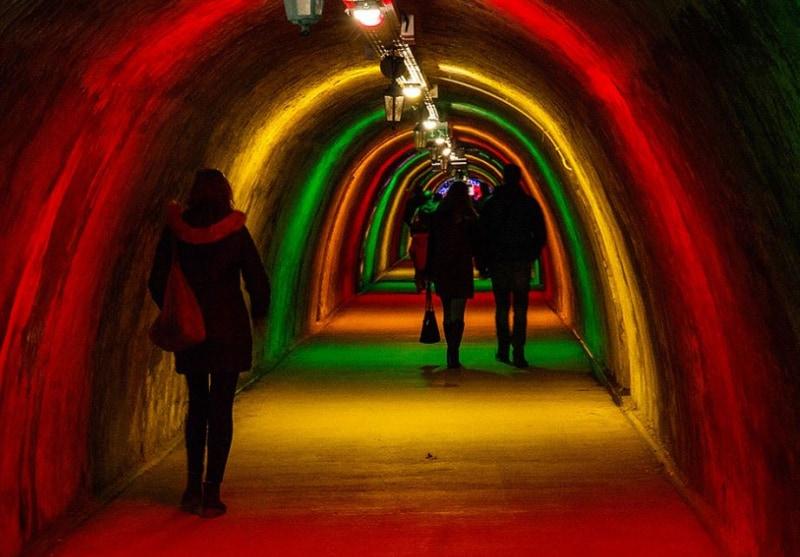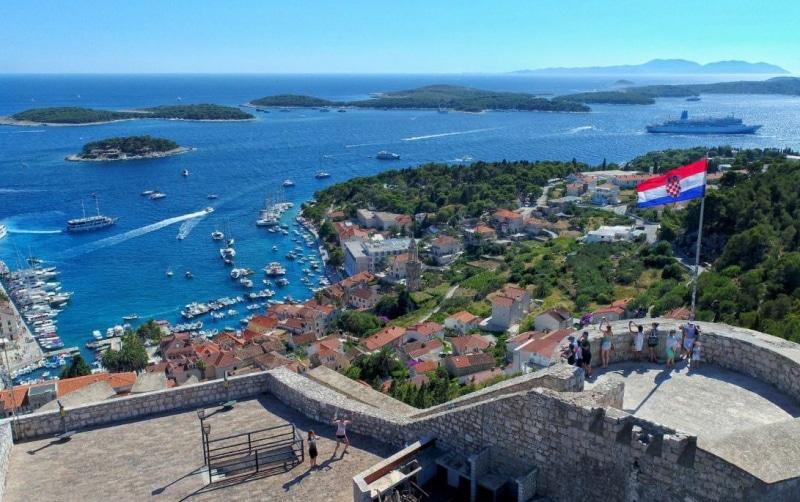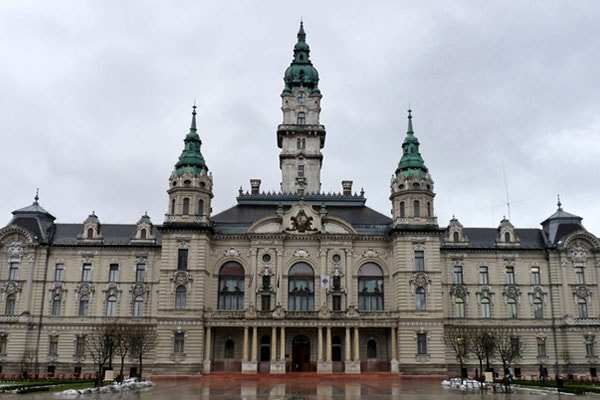HistoricalSites, Belgrade
Removed from Unnamed collection
Belgrade Fortress
Belgrade Fortress stands on top of a cliff overlooking the confluence of the Sava and the Danube. This is the last raised ground in the Balkan Peninsula before the vast stretch of flatland of the Pannonian Basin, extending all the way to Central Europe. The Fortress controls the access to the Pannonian Basin and the navigation on the Sava and the Danube, a position of outstanding strategic importance, accounting for its role as a border fortress throughout much of its history. It served to guard the border between the Roman Empire and barbarian lands across the Danube and the border between the Ottoman and Austro-Hungarian Empires, to name a few, which explains why it was so often destroyed, rebuilt and redesigned. The Romans were the first to build a fort at this site in the late 1st century as the HQ for the IV Roman Legion - Flavia Felix. Its remnants are barely visible today. Belgrade Fortress consists of the Upper Town, Lower (or Water) Town and Kalemegdan Park. The present layout of the Fortress took shape in the late 18th century, but there used to be many more buildings within its walls that had perished in different battles. http://www.beligrad.com/fortress.htm
Map
Explore more places related to this search:
Removed from Unnamed collection
Libertatii Square
Libertăţii Square is undoubtedly the oldest of the Timişoara squares. Libertăţii Square’s location is also the site of the original nucleus from which Timişoara’s evolution started, the first place where people settled and lived continuously in the hearth of today’s city. http://www.timisoara-info.ro/en/sightseeing/historical-quarters/cetate/tours/250-piata-libertatii.html
Map
Removed from Unnamed collection
St. Mary and St. Nepomuk Monument
The monument has two names – both used: “St. Mary monument” and “St. Nepomuk monument". Both are (and were) correct, but could cause confusion: there was another “Mary”, quite famous, and it is in the namesake square from Iosefin, and there is also another Nepomuk near the Millennium Church in Fabric. http://www.timisoara-info.ro/en/sightseeing/historical-quarters/cetate/tours/230-monumentul-sfintei-maria.html
Map
Removed from Unnamed collection
The Roman-Catholic Episcopacy Palace
The Roman-Catholic Episcopacy Palace is one of the most representative Baroque buildings in Timişoara. http://www.timisoara-info.ro/en/sightseeing/historical-quarters/cetate/tours/240-palatul-episcopiei-romano-catolice.html
Map
Removed from Unnamed collection
Croatian state archives in Osijek
Croatia State Archives in Osijek is a public institution founded by the Republic of Croatia and the territorial jurisdiction now extends to the area of Osijek-Baranja County and is one of 18 regional archives. http://osijek-culture.eu/en_UK/cultural-locations-and-facilities/cultural-facilities/croatian-state-archives-in-osijek
Map
Removed from Unnamed collection
Statue Of King Petar Kresimir IV
Located Near the old Hotel Krka you can find a statue of Croatia’s King Petar Kresimir IV. https://www.renegadetravels.com/9-things-to-do-in-sibenik-croatia/
Map
Removed from Unnamed collection
Fortress of Arad
The Fortress of Arad is a solid fortification system which was built in the 18th century at the orders of, and with the funding from, the Habsburg Empress, Maria Theresa. The cost to complete and erect the fortress reached 3 million Gulden (the currency used by the Habsburg Monarchy at the time). The fortress was built as an inner fortification system to protect the outer region of the Habsburg empire from conflicts in the area.
The main conflicts at the time were the ongoing wars between the Habsburgs and the Turkish Ottomans. The location for the fortress was chosen strategically to be at the crossroads of two very important trade routes of the day. It lies in the middle of the trade routes that led from the West to the Transylvania Region, and from the North, Oradea, and Satu Mare, to Timisoara, and down to the Danube waterway. http://roamingromania.com/fortress-of-arad/
Map
Removed from Unnamed collection
The Administrative Palace
The Administrative Palace of Arad is a building built between 1872-1875, which today houses the Arad City Hall. Architectural gem, shaped in "U", with 90 rooms, a true "Palazzo del Municipio", the building reflects the possibilities and also the willingness of citizens to keep up with European modernization. http://www.uvisitromania.com/tourist-attractions/arad/the-administrative-palace-id533
Map
Removed from Unnamed collection
Soimos Citadel
The Citadel of Soimos was built after the first invasion of the Tatars and documented since 1278. Soimos Citadel is on the list of historical monuments.
From 1278 until 1509, the city was ruled by Ladislau Kan II and Iancu of Hunedoara.
In 1509 the citadel and the domain become the property of Gheorghe Hohenzollern of Brandenburg. It was besieged in 1514 by Romanian and Hungarian rebels, led by Gheorghe Doja. After a brief resistance, the garrison of citadel led by Prince of Ciuci is an uprising against people of Gheorghe Hohenzollern and joins the rebels.
Turks occupied the citadel in 1552, after repeated sieges, and in 1595 was recaptured by György Borbély - Captain of Stephen Bathory - reaching into custody rulers of Transylvania.
In 1599-1600 pass under the rule of Michael the Brave (Mihai Viteazul). The citadel was finally liberated from Turkish domination in 1688. http://www.uvisitromania.com/tourist-attractions/arad/soimos-citadel-id535
Map
Removed from Unnamed collection
Purgly Castle
The Purgly Castle is a historic monument located in Şofronea, Arad county.
Based on documents is believed the castle construction date would be around 1789. However, the first documentary mention is in 1889, the building appears in a document that mentions an exchange of land. Baron Janos Purgly is one that has transformed the old castle giving her current appearance. http://www.uvisitromania.com/tourist-attractions/arad/purgly-castle-id547
Map
Removed from Unnamed collection
Kecskemet Town Hall
The neighbouring building is the Town Hall built by the plans of Ödön Lechner and Gyula Pártos.
The 150-year-old building of the City Hall was demolished in 1892. József Katona, the writer of our national drama worked there for 10 years. He collapsed and died at the entrance. The cracked stone monument set up at the scene of his heart attack in front of the building reminds us of this tragic event. The notice on this monument says: „The heart of the son of Kecskemét broke here.” In 1895 the offices moved into the building of which area is 5534 m2 and has 174 rooms. On the 8th July, 1911 there was a huge earthquake in the city which did not spare the City Hall either. Its collapsed chimneys and cracked walls were soon reconstructed under the direction of Ödön Lechner. The style of the building with its nearly rectangle-shaped ground-plan mixes the forms of the French Renaissance architecture and the elements of our popular art. The Ceremonial Hall is the venue of the General Assembly meetings of the city, national and international conferences, wedding ceremonies and ceremonial receptions.
The period furniture of the Ceremonial Hall is handicraft work. The wooden furniture and the printed leather backed chairs were made in Szeged according to the design of Lechner and Pártos. The beautiful and richly coloured glass windows were made in the workshop of the famous Miksa Róth. The decorative wall-painting was made by Adolf Götz, the wall-candlesticks and the chandelier were made by Sándor Árkay, Imperial and Royal locksmith upon the basis of the designs of Szilárd Várady.
The paintings were made by the famous Hungarian painter Bertalan Székely. These paintings show some periods of the Hungarian history embracing one thousand years. https://www.budapest.com/hungary/kecskemet/sights/town_hall.en.html
Map
Removed from Unnamed collection
Art Museum in Craiova
The Art Museum of Craiova is located in Jean Mihail palace – built in late XIX century https://romaniadacia.wordpress.com/2013/08/13/art-museum-in-craiova-jean-mihail-palace/
Map
Removed from Unnamed collection
The Church of Cosuna Monastery
The Cosuna – Bucovatu Vechi Monastery is an orthodox monastery situated in Craiova, Dolj county. It is the oldest religious edifice from the city of Craiova, being built in 1483. The Monastery`s church was built between 1506 – 1512 and the actual church in 1572, by the Boyar Stephan and his son. http://www.informatii-romania.ro/en/listing/manastirea-cosuna/
Map
Removed from Unnamed collection
Vulturul Negru Palace
THE BLACK EAGLE COMPLEX is probably the most monumental architectural accomplishment in Oradea and in Transylvania, as far as the Secession building style is concerned. The contest to build this architectural complex was won by architects Komor Marcell and Jakab Dezső. http://oradea.travel/en/?p=1913
Map
Removed from Unnamed collection
The Council Tower
It is one of the most famous monuments of Sibiu. It bears this name because it used to defend the entrance gate into the second precinct, situated in the immediate vicinity of the building which once hosted the City Hall of Sibiu, mentioned in the documents for the first time in 1324 (no. 31, Small Square, recently rehabilitated). http://www.turism.sibiu.ro/index.php/en/fortificatie/164
Map
Removed from Unnamed collection
Dubrovnik Ancient City Walls
The Walls of Dubrovnik (Croatian: Dubrovačke gradske zidine) are a series of defensive stone walls that have surrounded and protected the citizens of the afterward proclaimed maritime city-state of Dubrovnik (Ragusa), situated in southern Croatia, since the city’s founding prior to the 7th century as a Byzantium castrum on a rocky island named Laus (Ragusia or Lave). With numerous additions and modifications throughout their history, they have been considered to be amongst the great fortification systems of the Middle Ages, as they were never breached by a hostile army during this time period.[2] In 1979, the old city of Dubrovnik, which includes a substantial portion of the old walls of Dubrovnik, joined the UNESCO list of World Heritage Sites.
The oldest systems of fortifications around the town were likely wooden palisades. Today’s intact city walls, constructed mainly during the 12th–17th centuries, mostly a double line, have long been a source of pride for Dubrovnik. The walls run an uninterrupted course of approximately 1,940 metres (6,360 ft) in length, encircling most of the old city, and reach a maximum height of about 25 metres (82 ft). The bulk of the existing walls and fortifications were constructed during the 14th and 15th centuries but were continually extended and strengthened up until the 17th century. https://www.godubrovnik.guide/dubrovnikthingstodo/ancient-city-walls/
Map
Removed from Unnamed collection
Gellert Hill
The hill was named after bishop Gellért (Gerard), who was thrown to death from the hill by pagans in the fight against Christianity in 1046. His statue, which faces Elizabeth Bridge (Erzsébet hid) and holds a cross, can be seen from many parts of Pest. At the top of the hill is the Citadel (Citadella), a fortress built by the Habsburgs after defeating Hungary's War of Independence in 1849. It was a prime, strategic site for shelling both Buda and Pest in the event of a future rebellion.
In the 18th century, the slopes of Gellért Hill were covered with vineyards. The Tabán district at the foot of the hill was an important center of winemaking in Buda. Gellért Hill was a strategic military position in the Second World War as well as the 1956 Hungarian Revolution, when Soviet tanks bombarded the city from here. Budapest's Statue of Liberty stands on top of the hill, and she can be seen from all parts of the city. Liberty was erected during the Communist era, commemorating the liberation from Nazi rule.
Now a residential area, private homes and embassies line the streets winding up the hill. Since 1987, Gellért Hill has been listed as a world heritage site, as part of "the Banks of the Danube" area. The famous Hotel Gellért and the Gellért Baths can be found in Gellért Square at the foot of the hill. http://visitbudapest.travel/guide/budapest-attractions/gellert-hill/
Map
Removed from Unnamed collection
Fortress Kale
The Skopje Fortress commonly referred to as Kale Fortress, or simply Kale (from kale, the Turkish word for 'fortress'), is a historic fortress located in Skopje, the capital of the Republic of Macedonia. It is situated on the highest point in the city overlooking the Vardar River. The fortress is depicted on the coat of arms of Skopje, which in turn is incorporated in the city's flag.
The first fortress, according to research and available data, is believed to have been built amidst the 6th century A.D., on land that had been inhabited during the Neolithic and Bronze ages or roughly 4000 B.C. It was constructed with yellow limestone and travertine and along with fragments of Latin inscriptions, asserts the idea that the fortress originated from the Roman city of Skupi, which was completely destroyed by an earthquake in 518.
The fortress is thought to have been reconstructed during the rule of emperor Justinian I and constructed further during the 10th and 11th centuries over the remains of emperor Justinian's Byzantine fortress which may have been destroyed due to a number of wars and battles in the region, such as that of the uprising of the Bulgarian Empire against the Byzantine Empire under the rule of Peter Delyan. Not much is known about the Medieval fortress apart from a few documents which outline minor characteristics in the fortress' appearance. http://www.exploringmacedonia.com/fortress-kale.nspx
Map
Removed from Unnamed collection
House of Marco Polo
House of Marco Polo – believed to be house in which Marco Polo, the famous world traveller and writer was born. It’s recently bought by Korcula’s Town Authority which is currently planning to reconstruct and redone it into the Museum of Marco Polo… At present, just the part of the house is opened for visitors to have a look around. Climb narrow stairs and enter to the Loggia that has great views over Korcula Old town’s roofs. https://www.korculainfo.com/marcopolohouse/
Map
Removed from Unnamed collection
Klis Fortress
On the steep cliffs of the gorge between Kozjak and Mosor stands the Klis fortress, with one eye facing the sea and another facing Zagora. It was built on an extraordinary strategic location that allows military and commercial control over the whole Klis valley and the area of Salona and Split. Because of its importance, Klis was often referred to as the key to Dalmatia and the heart of the medieval Croatian kingdom.
The findings from the Krčina cave are the first traces of the settlement of the area around Klis fortress. It is ceramic pottery in which different forms are imprinted before the baking from which the name Impresso culture is derived, and it lasts from 6000 to 4500 BC on the Adriatic coast. Today we do not know much about the population of those times, but there is a possibility that there were first traces of agriculture in the Adriatic coast.
The first population of this area we can accurately identify are the Dalmatians, one of the Illyrian tribes. They inhabited the area from the river Krka to the Neretva, among others the area along the river Jadro (today’s Solinčica beneath Klis). They raised their forts on natural elevations for easier protection from possible attackers. At the foot of Klis fortress, the remains of such settlement were found, and its role was control of the passage between Kozjak and Mosor. Together with the other nearby forts, the hill below Klis controlled access to Illyrian Salona and the mouth of the river Jadro. This role will take on all of the later buildings at this location. https://www.tvrdavaklis.com/povijest-tvrdave/?lang=en
Map
Removed from Unnamed collection
Golden Gate Split
Porta septemtrionalis is their Roman name. Emperor Diocletian walked through them as he entered the Palace on the 1st of June 305. They were built in the shape of a rectangle, with double doors, as part of the defensive military tactics (propugnaculum).
The facade was decorated with niches containing figure sculptures of the four tetrarchs (Diocletian, Maximian, Galerius and Constantius Chlorus). These doors, starting from Peristyle, and then through Cardo street, led directly towards Salona as the capital city of the Roman Province Dalmatia, and could only be used by the emperor and the members of his family. Today they are, together with the nearby monument to the Bishop Gregorius of Nin (Grgur Ninski), the work of a great Croatian sculptor Ivan Meštrović, one of the favourite Split tourist spots.
Under the influence of Venice, in the 16th century, the gates change their name to Porta Aurea or Golden Gates, and this name stayed with them to this day. https://visitsplit.com/en/521/the-golden-gate
Map
Removed from Unnamed collection
Silver Gate
Porta Orientalis is their Roman name. These gates were used to enter the palace from the east towards the west, through the main street, decumanus, all the way to the Iron Gate and to Pjaca, the central city square.
The Silver Gate was more modest in its decorations than the Golden one, and it was closed from the Middle Ages till 1952, only to be thoroughly reconstructed during the destruction of the Baroque church Dušica. On each side of the gate, the remains of the octagonal towers are visible, hence making it easy to imagine the beauty of the construction and the strength of the control over the entrances from the north, east and west. Entering through those gates the passersby, even today, have the opportunity to walk the original ancient pavement on decumanus, walked also, so many years ago, by the Diocletian's subjects.
Silver Gate has recently enriched its history with the greatest event for all the Split Catholics when in the year 2000 Pope John Paul II passed through them admiring the beauty of St Domniuses Cathedral where he later prayed. https://visitsplit.com/en/522/the-silver-gate
Map
Removed from Unnamed collection
Diocletian Palace
Diocletian Palace is one of the best preserved monuments of the Roman architecture in the world. The Emperor's Palace was built as a combination of a luxury villa - summer house and a Roman military camp (castrum), divided into four parts with two main streets. http://visitsplit.com/en/448/diocletian-palace
Map
Removed from Unnamed collection
Cathedral of Saint Domnius
Among the European cathedrals the one in Split finds its seat in the oldest building - the Mausoleum of the Roman Emperor Diocletian. Inside the cathedral, at the end of the second millennium, the history reconciles ancient pagan, Christian Medieval and modern heritage. http://visitsplit.com/en/527/cathedral-of-saint-domnius
Map
Removed from Unnamed collection
Iron Gate
Their original, Roman name was PORTA OCCIDENTALIS, and they are one of the four through which life flowed during all 17 centuries of the history of Split. From the very first day that they were opened, they continued to witness all the changes the city went through from the Roman times, through the middle ages till today, all the power and influences, only to welcome, even to this day, with the bells of the Renaissance clock, the city of Split with its citizens. A relief of Nika, the Roman Goddess of Victory stood on the lintel, but already in the fifth century, the Christians carved a cross in its place as their symbol.
In the eleventh century, a small church of our Lady of the Belfry, was built above the door, originally dedicated to St Theodor, with beautiful early Romanesque bell tower. In the Middle Ages the area inside the gate was used as a courthouse, and until about fifty years ago an empire of small shops found its place there.
These entire history dynamics is present to this day, with housing construction in the very walls of the gate, bell tower, part of the Roman guard's pathway with a wonderful view of the decumanus and the People's Square (Narodni trg), and also city clock which is of special interest as it has 24 digits instead of the usual 12. By the very door, one of the most beautiful Palaces of the late Split noblemen found its place, belonging to the family Cypriani Benedetti, decorated by two unique six-arch windows. https://visitsplit.com/en/523/the-iron-gate
Map
Removed from Unnamed collection
Tvrdalj
Tvrdalj was built as a fort for defence from the Turks by the renowned poet from Hvar Petar Hektorović. It was erected by filling up the sea and one could enter it only over a bascule bridge. In the centre of Tvrdalj, Hektorović designed and built a Romanic park with a fishpond. Tvrdalj has numerous stone inscriptions, but the one saying 'Omnium Conditori' is the most significant one, since, with it, Hektorović dedicated his Tvrdalj to God, the Creator of everything. https://www.visit-hvar.com/tours/tvrdalj-stari-grad/HV-TR-24
Map
Removed from Unnamed collection
Blaca Monastery and Vidova Gora
After the meeting with the local guide and short transfer, we move down the southern slopes of the island by foot. After 40 minutes of light walking, we reach the monastery from the 16th century which was built by Glagolitic priests running from the Turks. This isolated monastery is built under the big living rock in the middle of untouched nature. You will be amazed by the story of this hard life and the fact that this was a respected astronomy centre. After visiting the museum, you can relax in natural surroundings and the sound of the island. We will also pass next to a small abandoned village Dragovode from which the children every day went to school in Blac. After this exciting return to the past, we continue with the transfer to the island's highest peak – Vidova Gora, 778 m high. This is the highest peak of all Adriatic islands, with a beautiful view over the islands of Hvar and Vis, and, in fine weather, even Italy. You have the chance to relax on a really special point on the island after which we return to Supetar. Don’t miss a chance to experience the island of Brač! https://www.croatiagems.com/vidova-gora/
Map
Removed from Unnamed collection
The large Cipiko palace
Father and son, Petar and Koriolan Cipiko, managed, clearly according to a certain family programme and with strategic marriages, to occupy the whole western side of the main square with their two palaces – opposite the council chamber, the cathedral and the other public buildings – furnishing them with an uncommon number of family coats of arms, clearly with princely pretensions. http://www.portal-trogir.com/about-trogir/must-see/#velika_cipiko
Map
Removed from Unnamed collection
The main city square
The programme of designing the apperance of the main city square in Trogir, at the site of the Roman forum, started in the 1300 with the construction of the commune's loggia and the council chamber. http://www.portal-trogir.com/about-trogir/must-see/#city_square
Map
Removed from Unnamed collection
Fortress Kamerlengo
Fortress Kamerlengo is situated at the west end of Trogir islet, built by Venetians in Xlll - XV century as a naval base for their navy forces in this part of Adriatic. It is named by town Magistrate Camerarius. Nowadays, the fortress is a multimedia centre with open-air cinema and stage for various cultural events. http://www.trogironline.com/virtual_guide/fortress_kamerlengo.html
Map
Removed from Unnamed collection
Gric Tunnel
Grič Tunnel was built in 1943, during World War II and connected to Zagreb tunnels. Its primary purpose was to shelter civilians from frequent bombings during WWII and the Croatian War of Independence.
After all, it is a part of a network of Zagreb tunnels under the Upper Town. But the only one open to the public!
You can find the tunnel entrances as they are marked with Zagreb coat of arms. Once you look at Zagreb coat of arms on the rooftop of St. Marks Church, you will notice the underground, secret door under the castle. Symbolising the entrance to hidden Zagreb network of tunnels.
Stories and legends speak of secret underground passages all over the city. One of them speaks of the great 1880 earthquake. When it is said most of the tunnels disappeared, containing the church gold. https://www.visitzagreb.hr/zagreb/gric-tunnel/
Map
Removed from Unnamed collection
Fort Fortica
If you walk from the square to the north, passing the main city gate or Porta di datallo (Gate of Dates) ascending the stairs through the old part of the city in which there are palaces built in the 15th and 16th centuries, through small bends that give out the aromas of Mediterranean plants, you will reach Hvar's fort Fortica or how the locals call it Španjola. It was built at the beginning of the 16th century (during the Venetian rule) and was reconstructed in 1579. Today the fort holds a collection of amphora and other exhibits from antiquity and the Middle Ages. Besides experiencing its exquisite architecture, you will experience an unforgettable panoramic view of the city of Hvar, its surroundings and the Pakleni islands. https://www.visit-hvar.com/tours/the-fort-fortica-spanjola/HV-TR-27
Map
Removed from Unnamed collection
Michael's Fortress
St. Michael's Fortress was built on a steep, rocky hill with a beautiful view to the numerous islands of the Šibenik archipelago and the medieval town.
Throughout turbulent history, it served as the main point of the city fortification system. Šibenik, the oldest autochthonous Croatian town on the Adriatic, was developed within its walls and first mentioned on Christmas Day of 1066 as the place where the Croatian King Petar Krešimir IV stayed. Most of the preserved ramparts and fortress bastions date from the late Middle Ages and Early Modern Age. The fortress was revitalized in 2014 and has a unique open-air summer stage. https://www.sibenik-tourism.hr/lokacije/st-michael's-fortress/4/en.html
Map
Removed from Unnamed collection
Gyor Old Town Hall
Above the beautiful bay window of the Baroque building the coat of arms of Győr can be seen; the city archives can be found in this house. https://www.budapest.com/cities_in_hungary/gyor/sights/old_town_hall.en.html
Map

